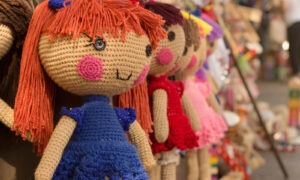Some people love to be tickled. Others hate it with a passion. Then there are those who maintain a fear based on the use of a feather as the instrument used to tickle. This fear is known as Pteronophobia.
When it comes to tickling you can really only be tickled by someone other than yourself. If you try to tickle yourself you will find it does not work. The primary reason this is true is that when you attempted to tickle yourself your mind is very aware of what you are going to do so your tickle reflexes will not respond with the surprise that is linked to the sensation of being tickled.
The general fear of being tickled is something I have experienced most of my life and I’ll explain why that’s the case in the next section.
What Causes Pteronophobia?
In my case the fear of tickling was the result of a family member who mistook my laughter when being tickled as an indication that I enjoyed the experience. I remember feelings of being trapped and confined. This obviously linked tickling with a very negative reaction and ultimate memory of tickling.
Symptoms of Pteronophobia
As mentioned above the fear of being tickled with feathers may not actually be a fear of feathers, but the experience they represent. The sight of the feather can transport you to a time and place where you felt you had no control of the situation you were in and felt unable to escape.
Other symptoms include…
- Air hunger
- Increased heart rate
- Trembling
- Screaming
- Crying
- Fainting
- Anger at past events expressed in a current situation
- Nausea
- Dry Mouth
- Panic attack
I have no doubt the intent of most tickling is to infuse some fun into an otherwise boring environment, but by observing some of the symptoms above you may be able to identify those who may struggle with this fear.
How to Overcome Pteronophobia
In my case one of the best ways I’ve found to overcome the personal fear was to empathize with my own children. I have one child who enjoys being tickled and another that does not. In both cases I have told my children that is they asked to be tickled, but want me to stop they should simply tell me and I will stop immediately. While this broke the cycle it doesn’t fully address ‘tickle’ recovery – just how to respond to others going forward.
For recovery I suggest learning what triggers the phobia and why you have allowed yourself to respond to this fear stimulus. You can be helped by visiting with a qualified therapist who is skilled at asking the right questions and uncovering the reason for the fear. This can be important to you – and to your children who may not understand the fear or may view your fear as normal and learn to follow you in that fear.
The fear of being tickled with a feather is also referred to as:
- Feather tickling fear
- Tickling fear
- Pteronophobia




















